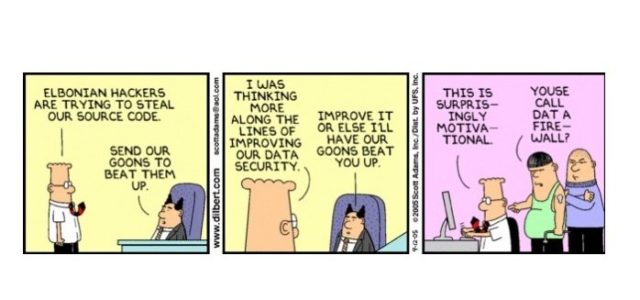Since 2008, I’ve worked privately as a statistical and data science consultant. I’ve given some background on my transition from the corporate world in Doing Your Homework: Tips on Telecommuting and How to be a Home Monkey.
I won’t repeat that here, except to say I’ve found it a highly efficient arrangement which gives me the time I need to stay current. Statistics and data science are high obsolescence fields, with new innovations appearing rapidly and at an accelerating pace. I need to spend a lot of time “cracking the books,” even at this stage in my career.
Of course, there are challenges. As Marketing 101 tells us, two fundamental barriers marketer face are 1) perceived lack of need for what they are marketing and 2) the belief that this need has already been met. In some cases, these objections are sensible but often not, in my experience.
People such as myself who work in specialized areas must deal with confusion about what we have to offer. For example, some believe statistics is easy, mostly t-tests, bar charts and other simple routines that can be automated or performed with push-button software. I address these perceptions in Statistics is Easy, Automating My Job, Why Statistical Consulting is Hard and a few other places. Frankly, these contentions are quite silly. The methods section of my company home page gives a sample of the methods I use and shows that analytics is considerably more than Stats 101.
I have also been approached about IT projects. Some folks see the words data and analytics on my LI profile and company home page and assume I build data warehouses. This has happened on several occasions. Since my expertise includes marketing mix modeling, some have misinterpreted this as meaning my company is a media consultancy. Terms like data, analytics, data science, statistics, AI and digital often seem buried under a mountain of misconceptions these days.
Another somewhat bizarre notion is that I work for a former employer as a full-time subcontractor. There is nothing in my LI profile or home page that suggests this. A further example of a mix-up is that some have evidently assumed I’m a front for a “delivery center.” Actually, I do all my own statistical work, which is faster, cheaper and better for the sorts of advanced customized analytics my work requires. Moreover, there aren’t that many people I would be able subcontract to.
For subcontractors, a fourth obstacle is a reluctance to outsource, which may be based on misunderstandings of company policy or misinterpretation of local country laws. There are also control freaks and people who feel threatened by outside experts. On the other hand, some do want to subcontract but have overruled by their superiors, or are fearful that if they seek approval it will reflect poorly on their own capabilities. Last but not least, there is an old guard still around that does not understand the concept of remote work and expects a consultant to work onsite. In my case, that would make zero sense.
Invoicing is something else to be careful about. “They’re not a client until they’ve paid” is an adage of the self-employed. I wish I’d heard that early in my career as a private consultant, when someone without proper budget authority approved my involvement in a project. This person was quite senior, so I assumed…
Never assume.
Working globally as I do, I must also be mindful of local laws and regulations, such as withholding taxes. Again, don’t assume. Some also ask for a rate card but this makes no sense in my case. Marketing research agencies don’t charge by the hour or day, so why should I? Moreover, rate cards can be deceiving since lower rates do not necessarily mean lower cost – cost is a function of rate and time. With rare exceptions, I charge on a project basis, and specify my fee and deliverables before the project has been commissioned.
Regarding business development, I haven’t found attending conferences or other networking events useful for finding new sources of business. I suspect one must to present frequently at these events over a long period of time for the investment to pay off. It’s similar to a dose-response function in biostatistics.
The same holds for training, in my experience. “Training’s bad business unless it’s your business” is another axiom I’ve heard entrepreneurs quote. For some of my projects there is substantial on-the-job training, and I also have learned a great deal from my partners on project teams. Formal training is another matter, and preparation time can be enormous. It may also require travel.
Social media is also overrated as a business development tool, in my opinion. I try to check LinkedIn, Twitter and Facebook at least once a day and, judging from the social media usage figures I’ve seen, this probably places me in an elite cadre of very heavy users. It’s a fair bet that that the majority of my LI connections, Twitter followers and FB Friends will never see this post. Industry publications may be a better bet, but how you promote your business depends on many things, such as your personality, your areas of expertise and your current contacts.
Something very positive I’ve learned along the way is that, even in this cynical age, honesty and competence still count. Flashy BS, fortunately, doesn’t fool everyone all the time and there are still trustworthy and capable people among both buyers and sellers of consulting services.
Setting up my own shop was a good move for me, but start-up failure rates are high. Very long hours are the rule. If you’re considering establishing your own consultancy, be realistic, not idealistic. It might be right for you or it might be a bad move. I would urge you to do your homework and look carefully before you leap.
Article by channel:
Everything you need to know about Digital Transformation
The best articles, news and events direct to your inbox
Read more articles tagged: Analytics, Featured, Statistics







